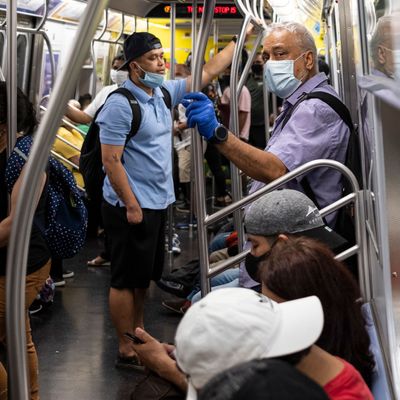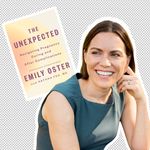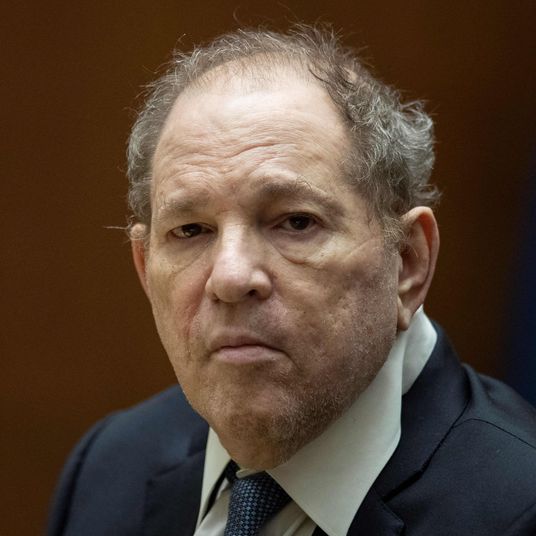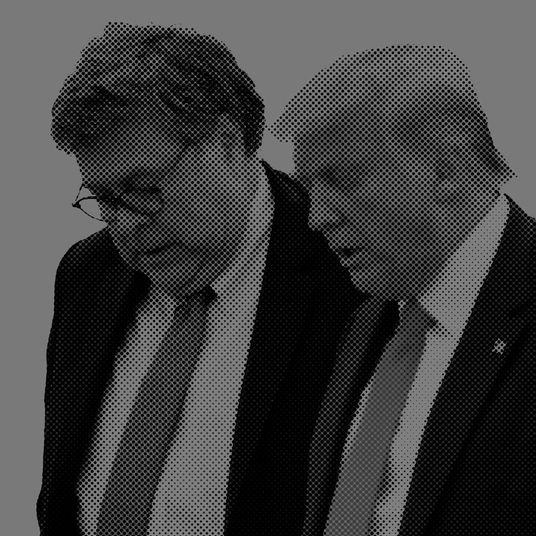
We’re committed to keeping our readers informed.
We’ve removed our paywall from essential coronavirus news stories. Become a subscriber to support our journalists. Subscribe now.
In the early months of the pandemic, it became deceptively obvious that dense cities were dangerous. As COVID-19 stampeded through New York, those who had options dispersed themselves into nature, while the Trump administration wrote off COVID-19 as a strictly urban disease — unfortunate for Democrats, immigrants, and nursing home residents, but irrelevant to the president’s fan base. Pundits fired up their anti–New York prejudices: city folk are constantly exhaling all over each other; suburbanites can relax in their roving decontamination chambers on wheels. When hell is other people, the path to salvation runs through a cul-de-sac. The Washington Post columnist Henry Olsen proclaimed on March 19 that the suburban lifestyle was the nation’s “secret weapon” against the virus. “The data are crystal clear on this. China’s population density is 397 people per square mile. Italy’s is 532 people per square mile, and South Korea’s is 1,366. The United States, by contrast, has only 94 people per square mile. That’s got to be a fact in our favor.”
Turns out it wasn’t.
The arguments over density and this latest contagion have been largely speculative, resulting in an orgy of confirmation bias. One study, which came out in early April, correlated density with cumulative deaths but not with rates of death or infection. The researchers found that the more people live in any given place, the more will get sick and die. They did not find evidence that living in high-rise buildings or on blocks of townhouses makes it any more likely that you will contract the coronavirus or die from it. Now, finally, we have data — preliminary, partial, and inconclusive, but data nevertheless. A new report in the Journal of the American Planning Association (by Shima Hamidi, a public-health expert at Johns Hopkins, and Sadegh Sabouri and Reid Ewing, both urban planners at the University of Utah) concludes that density doesn’t make a city sick; crowding and connectivity do.
It’s important to disentangle those concepts. New Yorkers live in a tightly packed city, but they’ve spent months steering clear of each other, fanning out in parks, avoiding clumps on the sidewalk, and limiting elevator passengers to two or three at a time. Crowding, on the other hand, exists in the desert and the Great Plains, in meatpacking plants in South Dakota, fruit-picker dorms in Florida and Washington, nursing homes in Wisconsin, and campaign rallies in Oklahoma. And connectivity is something else again: the more people move around, the more opportunities they give the virus to hitch a ride. “Large metropolitan areas with a higher number of counties tightly linked together through economic, social, and commuting relationships are the most vulnerable to the pandemic outbreaks,” the writers conclude. It’s not about how close your neighbors are; it’s about where you go and whom you see.
The Johns Hopkins–Utah study comes peppered with caveats, primarily that it’s a snapshot of a rapidly evolving situation. It deals only with the U.S., excluding high-density, relatively unscathed megalopolises like Tokyo and Seoul. New York, the country’s densest city, was hit early and hard, throwing off comparisons and making it difficult to sift through other variables. And the data runs only through May 25, missing the dramatic summer surge in low-density parts of the country like Texas and Arizona. Yet those limitations only strengthen the argument that, when it comes to an epidemic, density isn’t destiny. In the last two months, the virus has schmeared itself across vast territories dotted with single-family homes. The total incidence of COVID-19 in Phoenix is now roughly the same as in New York, which is nine times as dense. (Phoenix’s death rate, though, is lower.)
Morbid fear of density has a distinguished pedigree in American political thought, reaching back at least as far as the yellow fever epidemic of 1800, which prompted Baltimoreans and Philadelphians to pack their wagons and head for the hills. “When great evils happen, I am in the habit of looking out for what good may arise from them as consolations to us,” Thomas Jefferson wrote on that occasion. “The yellow fever will discourage the growth of great cities in our nation; & I view great cities as pestilential to the morals, the health and the liberties of man.” Then as now, a powerful enemy of urban life conflated moral and physical sickness, blaming density for both.
In the early days of this pandemic, even Governor Andrew Cuomo took it as a given that the virus was punishing New York for its density. Some commentators continue to take it for granted that Manhattan will be the Pompeii of the 21st century and that suburbs will emerge as winners in the competition for people, jobs, and money, maybe even for the nation’s soul. As the virus has spread out to the South and West, Trump has cartoonishly pitted zones of riots and crime against a verdant terrain of golf clubs and comfortable mortgages.
The new study doesn’t deny that dense cities give an opportunistic virus plenty of chances to thrive. Metropolitan areas abound in religious services, choir rehearsals, birthday parties, conferences, basketball games, and barbecues. But they also provide the tools to combat the spread of disease: quick access to health care, food delivery, and an abundance of public space where people can see others from a safe distance and still feel like they belong in the world. The New York experience also shows that a vast and chaotic city can act as a single disciplined machine in the face of a common threat. Our sense of personal liberty is always in equilibrium with the reality that we share limited space with millions of others. The disease struck at our habits of connection and conviviality, the joy of navigating crowds and sharing entertainment. And when it did, those same urban skills became useful in a new way, because we didn’t need to be persuaded that we are all responsible for each other. When you’ve spent enough time on a crosstown bus at rush hour, you’re primed to be grateful if everyone is wearing a mask. Density has given New Yorkers plenty of experience avoiding other people.
The point is not whether suburbs or cities are more hospitable to microbes, or whether a pandemic that has scoured virtually the entire world prefers its victims Democratic or Republican. Those are both pointlessly parochial comparisons. Humans have both clustered and spread out as long as they have formed societies, and both forms of living have survived lethal vulnerabilities. The hypothetical downsides of density won’t kill off city living any more than the well-documented climatic effects of car travel have shrunken suburbs. Epidemics follow the web of human pathways, reinforcing how intimately connected downtowns are to their peripheries; neither can function without the other, especially in an immense metropolitan area of 20 million people like New York’s.
That relationship isn’t static or foregone. In the mid–20th century, redlining and deindustrialization sucked white families away from the center, leaving their jobs downtown. In the past couple of decades, the suburbs have fragmented. The affluent all-white enclaves of Trump’s fever Tweets — the ones where a “beautiful suburban lifestyle” would wither in the face of desegregation — still exist. Now, though, they are interspersed with office parks, middle-class Black suburbs, wealthy Black suburbs, towns so multilingual and poly-ethnic they resemble Queens, and swaths of entrenched poverty. Trump’s view of the American population seems frozen in 1985. In the present, extra-urban diversity demands new ways of parsing the culture. Suburban politics aren’t monolithic, either, and Black Lives Matters protests have cropped up miles from the closest inner city.
The pandemic and a brutal economic downturn may alter the equilibrium again, in unpredictable, possibly contradictory ways. Some employers have discovered the joys of total decentralization — no overhead, no rush hour, no noisy co-workers in the adjoining cubicle. Facebook, on the other hand, has just leased 730,000 square feet in the Farley Building adjoining the main post office and directly above Penn Station, a contrarian act of faith in the future of offices and commuting. Maybe bedroom communities will evolve into home office districts (complete with business lunch spots and rent-by-the-hour conference rooms). Or perhaps companies will find they need more office space, not less, to keep workers out of sneezing distance from each other. More likely, those two countervailing trends will coexist, stirring cities and suburbs into an ever-murkier agglomeration.
The Johns Hopkins–Utah study examined the frequency with which people travel from county to county, which can be a deceptive measure: in the Northeast, a 20-minute trip will take you from Kings County through New York County to Queens; in the Southwest, you can drive three hours from the desert springs at Agua Caliente, past Phoenix and Scottsdale and up to Tortilla Flat, without ever leaving Maricopa County. Still, the conclusions are clear: packing into a crowd, then speeding to another, is a fine way to promote a pandemic. Whether you do that by subway or by pickup on the open road, the virus doesn’t care. It’s the mutual interdependence of cities and suburbs that defines both our richness and our vulnerability.






























